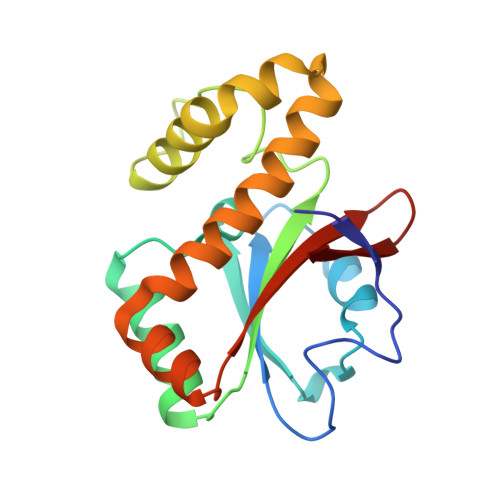The structural basis of the low catalytic activities of the two minor beta-carbonic anhydrases of the filamentous fungus Aspergillus fumigatus.
Kim, S., Kim, N.J., Hong, S., Kim, S., Sung, J., Jin, M.S.(2019) J Struct Biol 208: 61-68
- PubMed: 31376470
- DOI: https://doi.org/10.1016/j.jsb.2019.07.011
- Primary Citation of Related Structures:
6JQC, 6JQD, 6JQE - PubMed Abstract:
The β-carbonic anhydrases (β-CAs) are widely distributed zinc-metalloenzymes that play essential roles in growth, survival, development and virulence in fungi. The majority of filamentous ascomycetes possess multiple β-CA isoforms among which major and minor forms have been characterized. We examined the catalytic behavior of the two minor β-CAs, CafC and CafD, of Aspergillus fumigatus, and found that both enzymes exhibited low CO 2 hydration activities. To understand the structural basis of their low activities, we performed X-ray crystallographic and site-directed mutagenesis studies. Both enzymes exist as homodimers. Like other Type-I β-CAs, the CafC active site has an "open" conformation in which the zinc ion is tetrahedrally coordinated by three residues (C36, H88 and C91) and a water molecule. However, L25 and L78 on the rim of the catalytic entry site protrude into the active site cleft, partially occluding access to it. Single (L25G or L78G) and double mutants provided evidence that widening the entrance to the active site greatly accelerates catalytic activity. By contrast, CafD has a typical Type-II "closed" conformation in which the zinc-bound water molecule is replaced by aspartic acid (D36). The most likely explanation for this result is that an arginine that is largely conserved within the β-CA family is replaced by glycine (G38), so that D36 cannot undergo a conformational change by forming a D-R pair that creates the space for a zinc-bound water molecule and switches the enzyme to the active form. The CafD structure also reveals the presence of a "non-catalytic" zinc ion in the dimer interface, which may contribute to stabilizing the dimeric assembly.
Organizational Affiliation:
School of Life Sciences, GIST, 123 Cheomdan-gwagiro, Buk-gu, Gwangju 61005, Republic of Korea.















